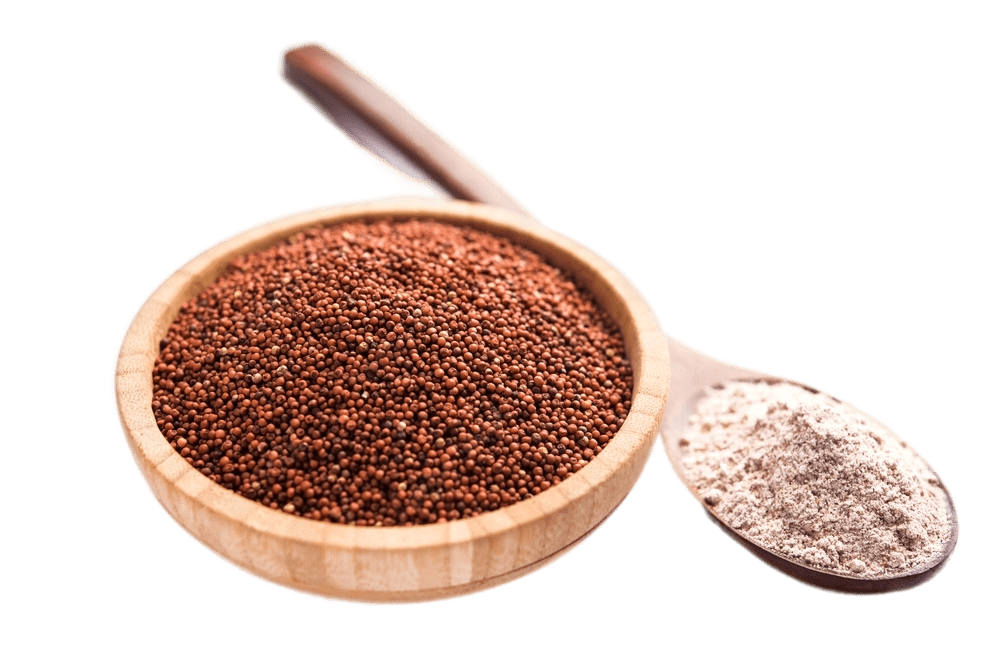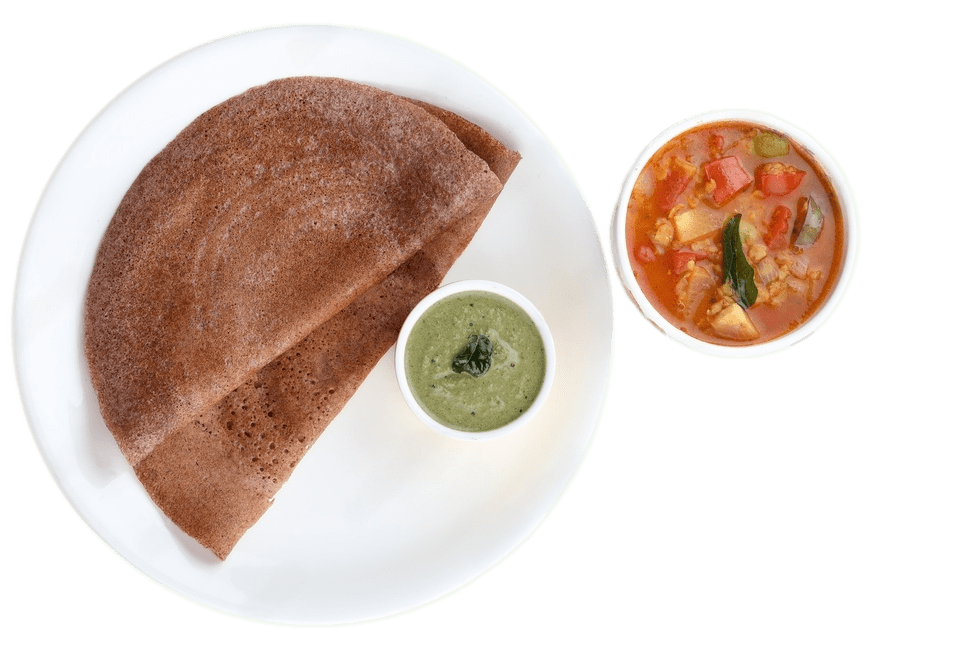

Finger Millets
Finger millet (Eleusine coracana L.) is important millet grown extensively in various regions of India and Africa, constitutes as a staple food for a large segment of the population in these countries. It ranks sixth in production after wheat, rice, maize, sorghum and bajra in India. It is a naked caryopsis with brick red-coloured seed coat and is generally used in the form of the whole meal for preparation of traditional foods, such as roti (unleavened breads or pancake), mudde (dumpling) and ambali (thin porridge). Epidemiological studies have demonstrated that regular consumption of whole grain cereals and their products can protect against the risk of cardiovascular diseases, type II diabetes, gastrointestinal cancers and a range of other disorders (McKeown 2002). Since the millets are normally prepared from the whole meal, the dietary fiber, minerals, phenolics and vitamins concentrated in the outer layer of the grain or the seed coat form the part of the food and offer their nutritional and health benefits (Antony et al. 1996).
Nutritive value of Finger Millet
Finger millet is considered one of the most nutritious cereals. Finger millet contains about 5–8% protein, 1–2% ether extractives, 65–75% carbohydrates, 15–20% dietary fiber and 2.5–3.5% minerals. Of all the cereals and millets, finger millet has the highest amount of calcium (344mg%) and potassium (408mg%). The cereal has low fat content (1.3%) and contains mainly unsaturated fat. 100 grams of Finger millet has roughly on an average of 336 KCal of energy in them.
However, the millet also contains phytates (0.48%), polyphenols, tannins (0.61%), trypsin inhibitory factors, and dietary fiber, which were once considered as “anti nutrients” due to their metal chelating and enzyme inhibition activities (Thompson 1993) but nowadays they are termed as neutraceuticals.
Being non-glutinous, finger millet is safe for people suffering from gluten allergy and celiac disease. It is non-acid forming, and hence easy to digest. Finger millet is rich in amino acids (Tryptophan, Threonine, Valine, Isoleucine and Methionoine).
Health benefits of finger Millet (Ragi)
- Finger millet is an excellent source of natural calcium which helps in strengthening bones for growing children and aging people. Regular consumption of finger millet is good for bone health and keeps diseases such as osteoporosis at bay and could reduce risk of fracture.
- It is now established that phytates, polyphenols and tannins can contribute to antioxidant activity of the millet foods, which is an important factor in health, aging and metabolic diseases.
- Finger millet’s phytochemicals help in slowing digestion process. This helps in controlling blood sugar level in condition of diabetes. It has been found that finger millet based diet helps diabetics as it contains higher fibre than rice and wheat. Also, the study found that diet based on whole finger millet has lower glycemic response i.e. lower ability to increase blood sugar level. This is due to presence of factors in finger millet flour which lower digestibility and absorption of starch.
- Finger millet is a very good source of natural Iron and its consumption helps in recovery of Anemia. The Ragi based foods are highly suited for expectant mothers and elderly due to there high calcium and iron content.
- Finger millet consumption helps in relaxing body naturally. It is beneficial in conditions of anxiety, depression and insomnia. It is also useful for migraines.
- Green ragi (finger millet) is recommended for conditions of blood pressure, liver disorders, asthma and heart weakness. Green ragi is also recommended to lactating mothers in condition of lack of milk production.
- If consumed regularly, finger millet could help in keeping malnutrition, degenerative diseases and premature aging at bay.
So, finger millet is an extremely nutritious cereal and is very beneficial for maintaining a good health. Therefore have received attention for their potential role as functional foods. However, its high intake could increase quantity oxalic acid in the body. Therefore, it is not advised to patients having kidney stones (Urinary Calculi). Finger millet could be enjoyed in different forms and preparations. ragi roti, ragi dosa, ragi porridge, ragi upma, ragi cakes, ragi biscuits are few popular dishes of finger millet (ragi).
